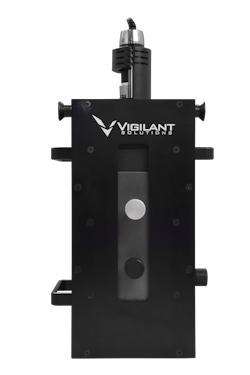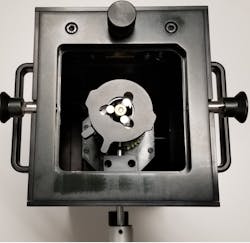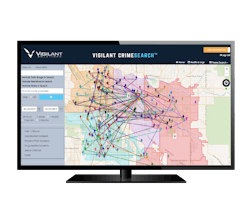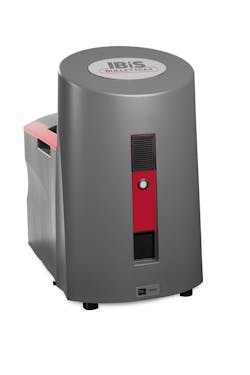Imagine you respond to a call with a crime scene that has a body, a witness, five, spent shell casings and no guns. You speak with the witness who says there was one shooter who took the gun with them when they fled. After studying the scene, and looking at the shell casings, you observe that three of them are from a 9mm firearm and the other two are from a .22 caliber firearm. You are now looking for two guns and most likely two suspects. What do you do now?
By utilizing gun tracing and ballistic comparison databases, investigators can not only link the activity of a firearm but also collect information pertaining to other incidents that may have occurred or to which a certain firearm connects to. The Bureau of Alcohol, Tobacco, Firearms, and Explosives (ATF), has established eTrace, an electronic way to connect law enforcement data and share intel on individual firearms. Completed returns of firearm information submitted are given to the law enforcement agency that submitted the eTrace request. By sharing data through this database, agencies can find out the history of a firearm and possibly obtain leads on reoccurring instances, linking crimes across the country.
Another way to link firearms to scenes and suspects is through ballistic comparison. Since each firearm leaves one of a kind markings on shell casings after being fired, ballistic comparison for firearms is the equivalent of fingerprints. The ‘fingerprint’ left behind on each shell casing is one of a kind to one specific gun. In an effort to share this information, ATF created the National Integrated Ballistic Information Network, (NIBIN). This system works somewhat in conjunction with the Integrated Ballistics Identification System (IBIS). These systems are usually used by a state crime lab, using 3D technology to compare the striation markings on each casing with others that have already been uploaded and recorded into the system. The new shell casing image is compared like a fingerprint to potential matches. If a match is found the information will be shared giving the investigators leads even if a prior incident involving that firearm took place in another jurisdiction. This information could include suspect info, the location of another incident where that gun was used and so on.
The company, Ultra Electronics, provides a variety of equipment and training services for ballistic comparison. MATCHPOINT is another type of software for bullet comparison. Along with the MATCHPOINT program, Ultra Electronics has BRASSTRAX and BULLETRAX which are microscopes that have 2D and 3D capabilities. This system has been used by several countries and is attainable for midsize and small departments to acquire. The information from the casings can be uploaded into the NIBIN network, thereby sharing information to other departments who use the site.
In the event of a use of force situation, or an officer involved shooting, firearm and ballistic tracing can have a significant impact on the investigation. Since these are high stress, intense situations and often involve more than one officer, the use of ballistic comparison can help replay the events just as well as body camera footage. When shots are fired in a use of force situation, it is imperative to determine which bullet casings came from which particular firearms not only to tell the story but to protect officers in the case from liability as well. Equally, comparing spent casings can disclose whether or not a suspect fired shots and how many. If there are multiple suspects, it can help explain how each was involved and to what extent.
The collection and use of this type of data may be implemented into crime mapping software programs in order to provide more intelligence regarding patterns of crimes or areas where particular crimes are more prevalent. Since just about any type of crime could include a firearm, whether directly or indirectly used, systems such as ATF’s database, Motorola and Vigilant Solutions’ CrimeSearch and others such as ISS’ Global provide police with a way to collect and pinpoint specific types of crime. The evidence on scene, such as the shell casings, can provide information that may be uploaded into these systems. In particular, this means that if a shell casing is compared and gets a hit on a firearm, and that firearm was used in four crimes in various counties, all of the information may be shared. From there, police agencies can share this with each other which may help connect and solve cases and prevent further incidents involving that gun owner. This not only helps one agency potentially solve cases but sharing this information can aid any agency that may have some evidence connected with the firearm or suspect(s) in question. Maptitude by Caliper is another crime mapping software program that can aid investigators in determining where certain crimes have been committed, giving them potential leads to solving cases. Maptitude is versatile in that in can work with several different types of databases to extract data in order to record it for agencies.
By incorporating the right tools, and utilizing the latest technology, investigators can get faster results leading to faster apprehensions and solve cases sooner rather than later.
About the Author

Hilary Rodela
Hilary Rodela is currently a Surveillance Officer, a former Private Investigator, a former Crime Scene Investigator, and Evidence Technician. She worked for the Ruidoso (NM) Police Department as well as the Lubbock (TX) Police Department. She has written for several public safety publications and has extensive law enforcement and forensic training and is pursuing forensic expertise in various disciplines. Hilary is a freelance public safety writer and curriculum developer for the National Investigative Training Academy.



